It could be argued that Dun Laoghaire Harbour has never been completely finished writes W M Nixon. To varying degrees, it has always been Work in Progress. Construction started in 1817, yet it was maybe all of twenty or even thirty years before the basic shape of the harbour as we know it today had been finally created. But in 1821 there was enough of a new pier in existence for King George IV to visit and re-name it the Royal Harbour of Kingstown.
By 1828 there was enough shelter available to provide the setting for the first staging of a regatta, and by 1834 the pioneering railway line to Dublin was in existence to accelerate Kingstown’s development as a seaside town and ferry port. Initially, it had been envisaged solely as an Asylum Harbour for Royal Navy and other government vessels seeking shelter in southeasterly gales in Dublin Bay. The ferry port and the rapid growth of a town had not been in the original plan. But ship-owners and property developers had other notions, as they usually do, and the ferries were there from the start.
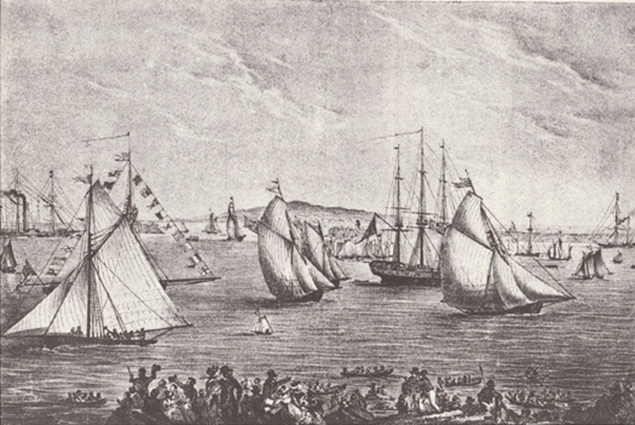 The first regatta in Kingstown Harbour in 1828
The first regatta in Kingstown Harbour in 1828
By 1850, both the Royal St George and Royal Irish Yacht Clubs were in existence on the waterfront to provide focal points for the development of sport afloat, and then the cross-channel ferries – which had been making do as best they could with berths along the East Pier – were in 1859 provided with proper berths at the new Carlisle Pier, with direct rail connections.
The Edward Yacht Club – now the National Yacht Club – came into being in 1870 between the Carlisle Pier and the East Pier. However, although the overall outer shape of the harbour was by now finalised, as an 1870s plan to put an extra island breakwater across the rather exposed northeast-facing entrance was never implemented, within the harbour re-shaping of the waterfront continued.
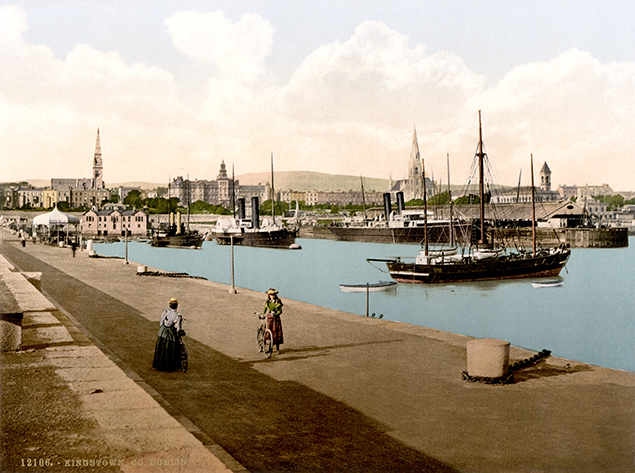 It has been suggested that temporary moorings for a fleet of Classics could best be laid in this area – seen here around 1895 – off the National Yacht Club
It has been suggested that temporary moorings for a fleet of Classics could best be laid in this area – seen here around 1895 – off the National Yacht Club
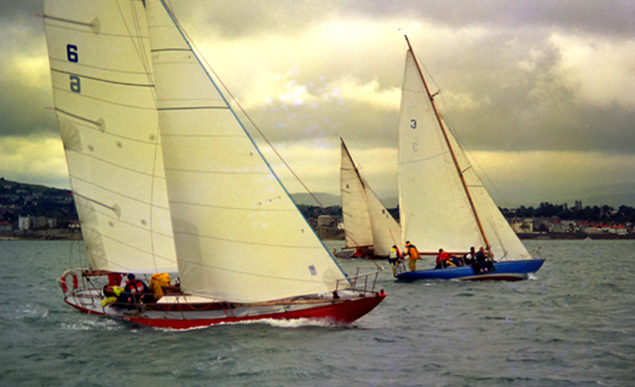 Last of the glory days. The Dublin Bay 24s in their final season in Dun Laoghaire in 1997. Photo: W M Nixon
Last of the glory days. The Dublin Bay 24s in their final season in Dun Laoghaire in 1997. Photo: W M Nixon
With this week’s news that transitional teams are already working on the practical issues of transferring the semi-governmental Dun Laoghaire Harbour Company into the overall control of Dun Laoghaire/Rathdown County Council, a new chapter is opening in the history of this extraordinary place, and eventually it will mean further infrastructural work, which in turn validates our claim that Dun Laoghaire Harbour is almost always to some extent Work in Progress.
So when we have to put a date on the harbour, the only one beyond argument is that work started in 1817 under the direction of the great engineer John Rennie. Thus in the absence of any other date of comparable exactitude, 2017 marks the Bicentenary of Dun Laoghaire Harbour.
It was “the new Dunleary harbour” only from 1817 to 1821, then it was Kingstown Harbour for the next 99 years, and ever since it has been Dun Laoghaire Harbour. But if the organisers of next year’s Volvo Dun Laoghaire Regatta 2017 from July 6th to 9th 2017 achieve just some of their more visionary ideas to attract extra sailing visitors, we may even see a movement to return to the original user-friendly Dunleary Harbour spelling. You’d be surprised how many first-time visitors to the harbour and marina still make an absolute meal out of the pronunciation. And even within the ranks of the Gaelgoirs, there are several opinions as to what is correct.
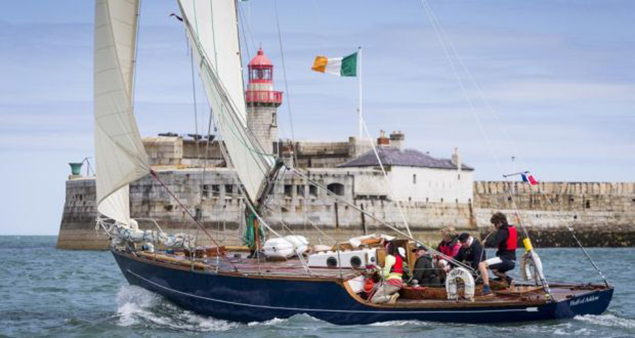 The restored Huff of Arklow was one of the stars of the Volvo Dun Laoghaire Regatta 2015 – and she won her class. Photo VDLR
The restored Huff of Arklow was one of the stars of the Volvo Dun Laoghaire Regatta 2015 – and she won her class. Photo VDLR
But simplifying the name to Dunleary Harbour is another day’s work. Top of the agenda this weekend is something else altogether - the growing sense of excitement over the fact that Volvo Dun Laoghaire Regatta 2017 provides the perfect opportunity to celebrate the Harbour’s Bicentenary in magnificent style, and the VDLR 2017 Organising Committee under the chairmanship of Tim Goodbody have been beavering away for some time now on making VDLR 2017 even better than VDLR 2015, which will take a bit of doing.
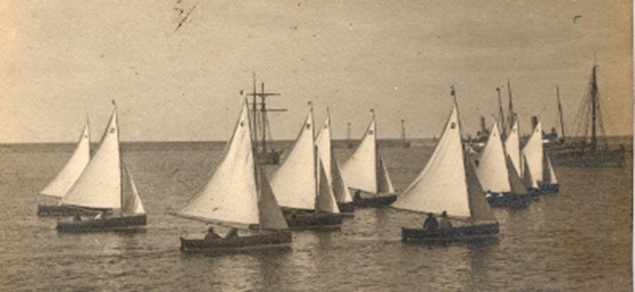 The Water Wags started as 13ft double-enders in 1887, but then changed to transom-sterned 14-footers in 1901, and are seen here around 1905
The Water Wags started as 13ft double-enders in 1887, but then changed to transom-sterned 14-footers in 1901, and are seen here around 1905
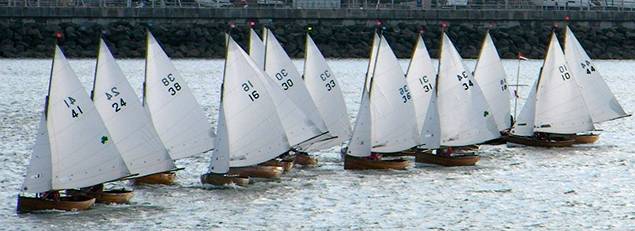 Still going strong…..the Water Wags would play an important role in a Bicentenary Classic Boat regatta within Volvo Dun Laoghaire Regatta 2017.
Still going strong…..the Water Wags would play an important role in a Bicentenary Classic Boat regatta within Volvo Dun Laoghaire Regatta 2017.
Apart from all the other standard-setters, last year saw Volvo Cork Week 2016 having something very special within it with the staging of the inaugural series for the new Beaufort Cup, an international event raced between crews from the Defence Forces from home and abroad, together with marine-related Emergency Services.
It was won by an Irish Defence Forces crew skippered by Commandant Barry Byrne, sailing John Maybury’s J/109 Joker. And one story which emerged afterwards was that it was hoped to make the Beaufort series an annual event, with the expectation of the holders that it could possibly be made part of Volvo Dun Laoghaire Regatta 2017. But the problem with this might be that the Beaufort is going to become such a major happening that it could seriously deplete other fleets in Dublin Bay, particularly the J/109s.
However, in view of upcoming Bicentenary and its celebration, an important aspect of the Volvo Dun Laoghaire Regatta 2015 which was mentioned in one of our Afloat.ie reports at the time was the number of classics taking part. Most obvious were the Howth 17s of 1898 and the Water Wags of 1901 and 1887. But also racing were the Mermaids of 1932, the IDRA 14s of 1946, and the Glens of 1947, while a much-admired presence was the very special superbly-restored Flying Thirty Huff of Arklow.
Designed by Uffa Fox and built by Jack Tyrrell of Arklow in 1950, Huff of Arklow won her class overall under the visionary Progressive ECHO handicap system. In addition, the dinghy adjudged best overall was Ian and Judith Malcolm’s hundred-years-old Water Wag Barbara.
Taking a general look at all this, we suggested that in effect there was an excellent Classic Yacht Regatta hidden in plain sight in the midst of Volvo Dun Laoghaire Regatta, and it might be something worth remembering for future plans. Now the word on the waterfront is that there’ll be a significant upgrade in interest in the Classics at the VDLR 2017, and there’ll be special attention given to enticing historic boats which have direct links to Dun Laoghaire.
Obviously heading the agenda are the great Dublin Bay One Designs, and the whisper is that things are now looking healthier for the Dublin Bay 24s which ended up in an ambitious restoration plan in South Brittany which failed to reach fruition. So it’s not unreasonable to hope that the already restored DB24 Periwinkle might be persuaded home.
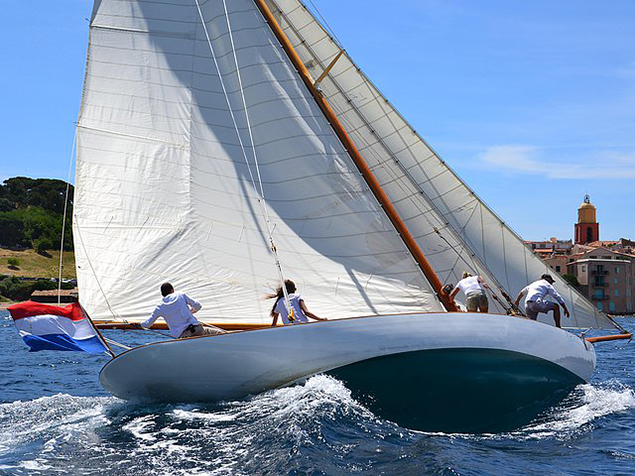
But long before the Mylne-designed 24s came into being in 1947, there were the Fife-designed Dublin Bay 25s in 1898, and one of them still exists. These days she’s called Iona, but originally she was called Nance, owned by a man called Cosby Burrows from Cavan, who had her built in 1899 at the Fife yard in Fairlie in Scotland.
That in itself is historic, as the other Dublin Bay 25s – around a dozen in all – were built in the Dublin Bay region. Be that as it may, Nance still survives as Iona, and she’s under Dutch ownership but living in the south of France, restored with such enthusiasm that she can set either a gaff or a Bermudan cutter rig.
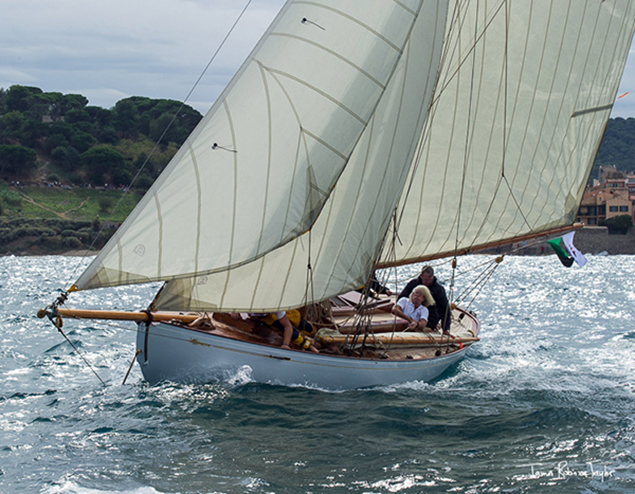 Tern is one of only two surviving Belfast Lough 25s of 1897, and she is the one with the closest links to Dun Laoghaire.
Tern is one of only two surviving Belfast Lough 25s of 1897, and she is the one with the closest links to Dun Laoghaire.
The Dublin Bay 25s were in turn based on the Belfast Lough 25s of 1897, all of them built by John Hilditch of Carrickfergus. But after that class was wound up in 1909, one of them – Tern – was in Dublin Bay from 1912 until 1919, and again from 1944 to 1954. Thus of all the Belfast Lough boats, Tern has the strongest Dublin Bay links, so who knows, as she has recently had a major restoration, she too might be a candidate for the Bicentenary Classics regatta in Dublin Bay.
Soon after John Hilditch finished the eight Belfast Lough 25s, he built the first five Howth 17s in 1898, and they all survive, while the class has expanded far beyond the original five. In fact a new boat – the nineteenth – is now being built for Ian and Judith Malcolm at the remarkable Skol ar Mor in southern Brittany, and as the Howth 17s have been a mainstay of the VDLR in times past, they should be encouraged to participate in 2017.
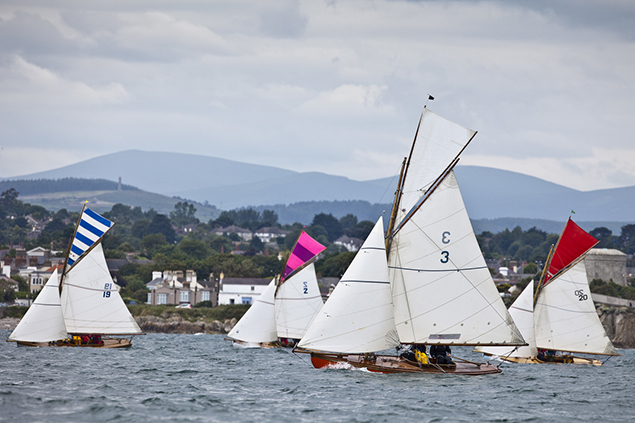 The Howth 17s racing in the Volvo Dun Laoghaire Regatta. Photo: VDLR
The Howth 17s racing in the Volvo Dun Laoghaire Regatta. Photo: VDLR
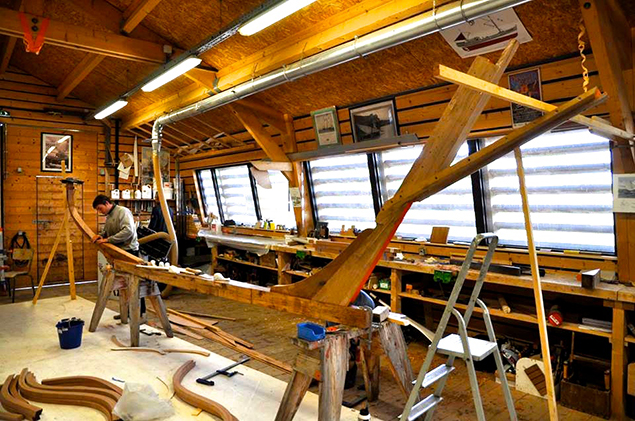 The backbone of the new Howth 17 under construction at Skol ar Mor in southern Brittany
The backbone of the new Howth 17 under construction at Skol ar Mor in southern Brittany
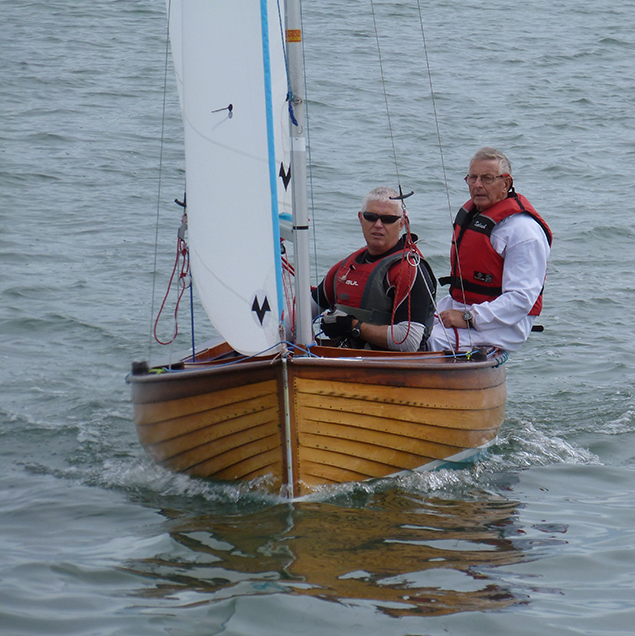
After the great success of their 70th Anniversary season through the summer of 2016, the IDRA 14s have themselves a new lease of life, and they always seem to achieve their best turnouts in the Dun Laoghaire regatta, so they’ll be looking to excel themselves, particularly after being seen to extremely good effect on TV this week……
Another historic class which has possibilities is the Colleens, where Hal Sisk led a movement to re-create the old 1890s design in fibreglass. With a bit of encouragement, owners like Dermot O’Flynn might be persuaded to return to Dublin Bay after this year’s cruising in West Cork, and maybe race against Hal himself. However, this tireless promoter of sailing heritage has other boats which he might sail, including a Water Wag and the famous Peggy Bawn, though she is currently very actively for sale.
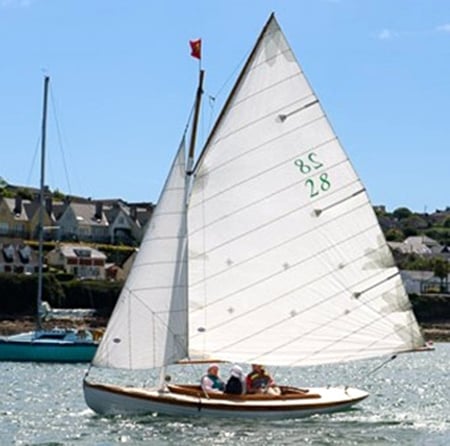 Dermot O’Flynn’s Colleen in Crosshaven
Dermot O’Flynn’s Colleen in Crosshaven
We don’t consider the Dragons at first thought as Classics, but their design goes back to 1929, and one of the best classic Dragon fleets in the world is to be found in Ireland, in Glandore in West Cork, where that seasoned campaigner Don Street sets a cracking pace. They’ll be beating the drum for everyone to go to the Glandore Classics in the last week of July 2017, so maybe some of the Glandore Classics might see their way to heading for Dun Laoghaire to strut their stuff between the 6th and 9th of July.
In the classic cruiser end of things, one of the most popular boats around Dublin Bay is Darryl Hughes’ beautifully-restored 1937 Tyrrell ketch Maybird. Though he has entered for the Dun Laoghaire to Dingle Race on June 14th, his love of maritime history is such that he finds the idea of being in Dun Laoghaire – where Maybird’s sister-ship Aideen was based for many years – a very enticing prospect for the Bicentenary in July.
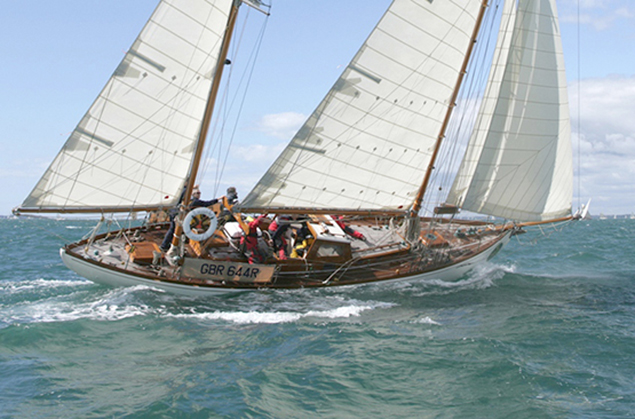 Darryl Hughes’ 1937 Tyrrell ketch Maybird
Darryl Hughes’ 1937 Tyrrell ketch Maybird
There are many other superb classic boats not too distant from Dublin Bay. But if they’re going to be invited to the Bicentenary Regatta in Dun Laoghaire, it has to be remembered that these aren’t rough and tumble modern boats which can be left to their own devices. On the contrary, they need pampered attention.
For starters, most of them find it much easier to come to a mooring than struggle into a marina berth. So one suggestion which has already arisen is that temporary additional moorings for Classics should be laid off the National Yacht Club, where there’s most space available, and it would have the bonus of putting these fascinating craft where they’d be most conveniently visible from shore.
So many and varied are the needs of true classics that they need special treatment. Ideally, each boat - and certainly each class - should have a designated minder complete with RIB and crew to look after their needs. When you learn of the effort that is needed to bring an old classic back up to first class order, genuine care and attention for boat and crew should be a natural priority at any port they visit.
It’s not unreasonable to suggest that after the turmoil of the past two Centuries, there is much to celebrate in the fact that, in 2017, the 200 year old Dun Laoghaire Harbour seems at last to be finding an equitable system of management and administration. But if people are going to be invited to bring their cherished classics to Dublin Bay to celebrate this, then it’s only right and proper that the most thoughtful Irish hospitality should be extended to them in every way.
































































